a few minutes, vol. 16 — dispatches from a busy, black hottie
A few thoughts on claiming the edge as central, shark boots, and articles galore.
Sometimes, I want to start off this newsletter with a disclaimer that I don’t know what the white girls are doing, and I don’t care. So many newsletters cover beauty, fashion, and cultural happenings through that lens. As Toni Morrison said, “I stood at the border, stood at the edge, and claimed it as central. I claimed it as central, and let the rest of the world move over to where I was.”
I'm not (YET) at the world-building and perspective-shaping level that Toni Morrison perfected, but it's important to me to keep cultivating a voice and perspective that is uniquely mine.
Today, this newsletter intro is short because looking at a computer screen drains me. All I can think about is getting to Soho House at 6 for 50% off drinks with my best friend, followed by an hour-long drive to the OC Fair. Here are some articles, podcasts, songs, and cultural things this Black girl can’t stop thinking about.
A Few Articles + Pieces of News (Links In Header)
Why Fashion Archival Imagery Is On The Tip Of Everyone’s Tongues
Contributing fashion editor at Essence, Robyn Mowatt, highlights why there's a proliferation of archival culture accounts on TikTok, X, and Instagram showcasing images from our beloved TV shows, runway collections, pop culture moments, and more.
According to Mowatt, the collective's obsession with imagery from the Y2K era seems to be borrowed from Tumblr, a "hodge-podge platform where you could see images from the 1990s and 2000s and showcase your personal style.”
If you want to infiltrate your IG and X (formerly Twitter) feed with Y2K images, iconic magazine clippings, and more, Mowatt also recommends some good IG pages to follow.
What I love about the recognition that archival images, pages, accounts, and communities are seeing is that it serves as a vehicle to give Black women who have shaped pop culture and fashion their flowers.
Two pages that I don’t think get their flowers are @bougie.bratzt and @flyandfamousblackgirls, which both share throwback photos of “bad bitches” from the ’90s and 2000s.
Comfort-First Footwear Market Surges: How Ugly Shoes Became A Fashion Statement
Forbes covered ugly shoes in June, and so have Who What Wear and Axios. I've been a fan of clogs, mules, and other unconventional footwear for some time (proof included from 2015), as I find they make outfits, especially when dressing high femme, more visually interesting. Also, I’m no trend reporter or archivist, but D.C. women like myself have always been wearing more visually aggressive shoes, platform sneakers, and mules.
I need to reflect more on what I'm trying to communicate with my collection of shoes that have both Steve Irwin and Black Air Force energy. I appreciate their functionality—most of these shoes are easy to clean. Maybe I’m rejecting the male gaze, but then, being “one of the bros” or the girl that people like because you dress like Karrahbooo is cringe. I've always disliked the term 'dressing like a boy,' and some of the sleeker styles in this category, like ballet sneakers, flirt with that idea without explicitly stating it. They’re also just comfortable, yes Tabis are comfortable with the right socks and sizing.
Lately, I've put aside my Tabis and have been into my Vibram Five Fingers.
I've also gravitated towards my Comme des Garçons x Salomon platform sneakers.
Although Sandy Liang's most recent Salomon collab sold out, I'm surprised that the demand, typically reflected in resale prices, is so low. The shoe is ugly as hell, but it wasn't interesting enough for me to break my no-buy season. The brand's version of the Speedcross with pink ribbons is only $186 for a men's size 7 on StockX.
Stylist and Editor Indya Brown showed off some of her “ugly shoes” from SSENSE here and made a video about the Virbram trend and gorpcore’s new day here.
How the Celebrity Closet Sale Became the Cheapest Thrill Amongst A-Listers
Kardashian Kloset has always piqued my interest. How much are they making yearly? I've been experiencing a days-long bout of FOMO after Paloma Elsesser's closet sale, where my middle school friend and graphic designer Caprice and her mom cashed out. Over the past few days, ex-Kardashian bestie turned WAG Jordyn Woods has been selling and promoting her closet on Poshmark, with proceeds benefitting Covenant House California.
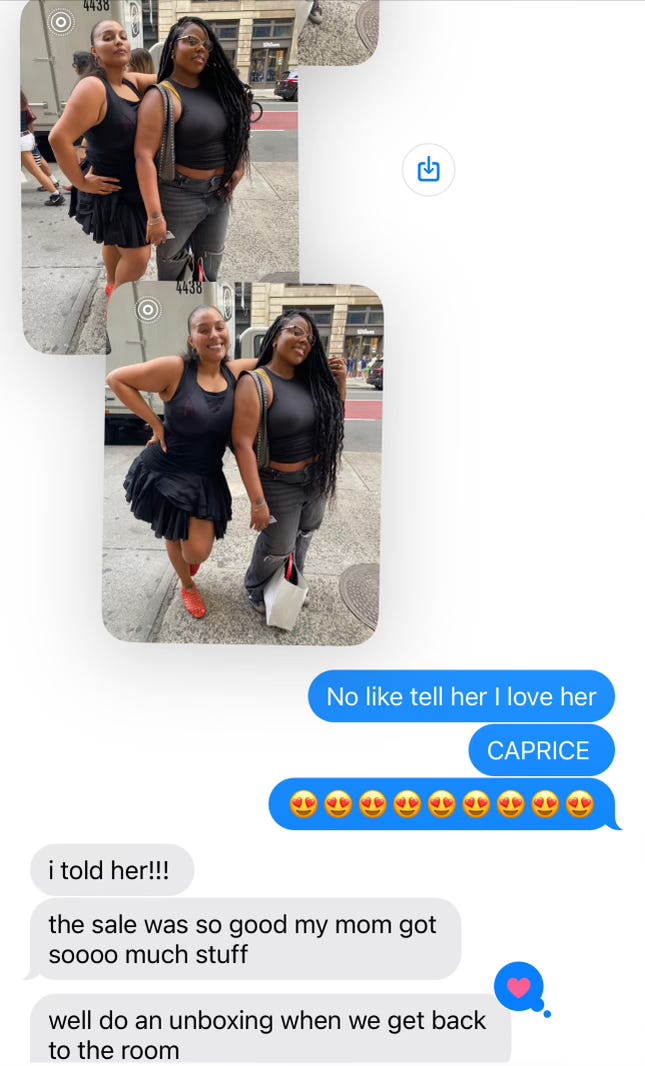
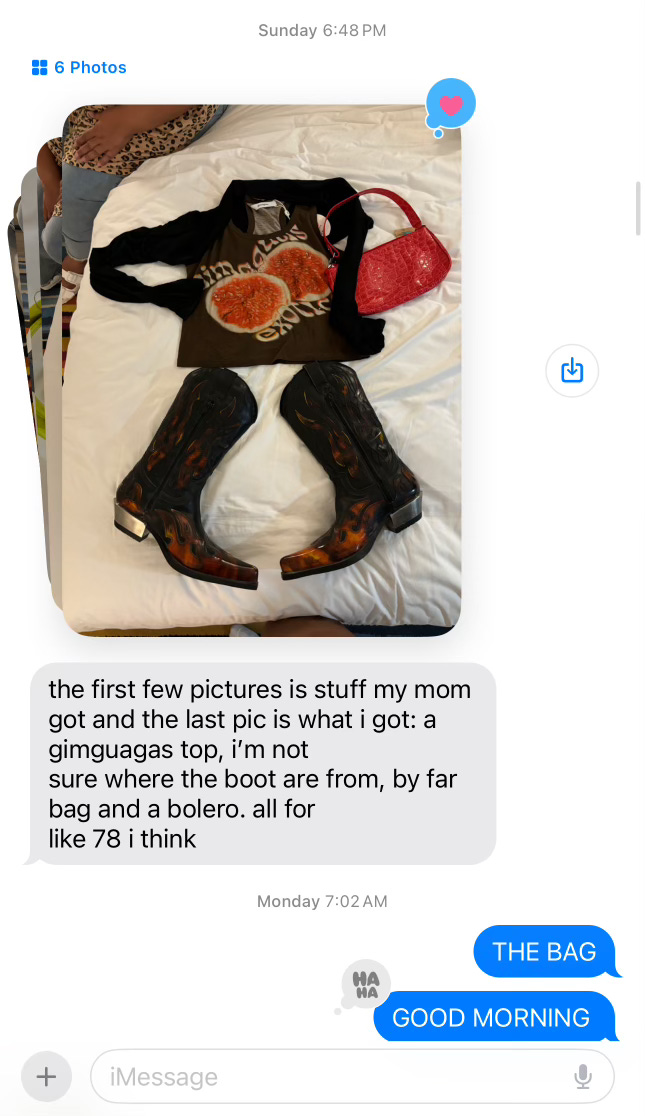
A small part of the allure of secondhand shopping for me is pondering the lives of the people who owned the garments before me. This piece from Architectural Digest’s imprint, Clever, explores a wave of celebrity closet sales, how these efforts have built rapport with their audiences, and the business of celebrity closets for stylists and professional organizers.
Earlier this year, I stopped by Angelo Baque’s closet sale at his Awake store in LES. I have yet to wear the $40 jeans I bought.
Why I Finally Quit Spotify
Sonos and Spotify aren’t having a good week. In this week’s Infinite Scroll column from The New Yorker, Kyle Chayka writes about Spotify’s latest update, which has moved away from allowing users to simply listen to the music they want to hear. The app pushes dozens of playlists and podcasts, almost forcing you to toy with their algorithm instead of leaning into your own tastes and interests. He writes about how the streaming ecosystem is turning our focus away from albums, stating, “The [album] format has been increasingly destabilized for years, and famous musicians are turning more toward sprawling mixtape formats in response to the streaming ecosystem.”
This reminds me of Beyoncé’s infamous album quote from her 2013 HBO documentary: “People don't make albums anymore. They don't make albums. They just try to sell a bunch of little quick singles. And they burn out, and they put out a new one.”
He writes, “Listeners become alienated from their own tastes; when you never encounter things you don’t like, it’s harder to know what you really do,” which extends to our collective shopping and styling habits.
There’s an obsession with consuming content tailored for us instead of stepping out on a journey to sift through what we do and don’t like. Apps like Spotify, dare I say Pinterest flatten that experience, which is why I personally don’t use the streaming platform. I also find a lot of joy in playlist curation.
I'm shamelessly plugging my Apple Music profile here if you’re looking for (pretty good, if I do say so myself) playlists! Maybe I’ll do a weekly monthly playlist of what I’m listening to, but right now, “BIRDS OF A FEATHER” is tattoed to my brain, and I’m on YouTube listening to DJ mixes.
But I’m curious: What is your preferred streaming platform? I’m an Apple Music girl but still use my sister’s Tidal login weekly. If I’m listening to music at home or with men, it’s typically on YouTube. Soundcloud if I’m feeling nostalgic, and Spotify for podcasts. Don’t judge the variety. I’m a Gemini.
Dabs for Votes: Does Using Hip-Hop Culture Help Candidates Win Elections?
Charlamagne tha God said there are only two hip-hop journalists in an interview with Big Sean. He's wrong, but I hope he's at least read the work of Lawrence Burney, hip-hop journalist and founder of True Laurels. With all the uproar about Quavo and Megan Thee Stallion at Kamala's Georgia rally, it's a good time to revisit Burney's Obama-era piece on the genre, election season, and using hip-hop to garner votes where he's in conversation with political scientist and professor Lester Spence.
Somewhere There With Imani Dennison
One of my favorite writers and cultural workers, Clarissa Brooks, is in conversation with multidisciplinary artist, curator, and award-winning filmmaker Imani Dennison for Office magazine about her latest documentary, The People Could Fly. The film focuses on roller skating and how roller rinks emerged as sanctuaries for Black culture in her hometown of Louisville, KY.
Here’s more about the film from Denson herself: "This film is about Louisville being a segregated city and still is. That trajectory and how Black people have been building community and having it ripped from them and also just navigating the segregated South—I mean, even today in 2024. As much as this film is about imagination, it is definitely about resistance, resilience, and overcoming structural racism in a segregated city and a small town, especially.”
Why Do Braids Hurt So Bad?
The New York Times explains why box braids and other tight hairstyles can hurt so much. The conversation about knotless braids not being protective styles has been circulating for a while now. If you're curious about the reasoning behind that sentiment, this article is for you.
As someone who has worn braids and twists for over ten years, I recommend avoiding getting small braids; I typically go for smedium or medium-sized ones. After trying Boho braids for my birthday, combing or brushing out braids or the boho hair attached seems counterproductive, as that adds a lot of tension to your hair—boneless braids for the win.
TikTok’s underrated thought daughter, KHAENOTBAE, made a TikTok a few days ago, and it hit home for me. Side note: What is Substack’s issue with embedding TikToks?
11 Black Men on What Democrats and Republicans Get Wrong About Their Lives
The NYT also surveyed 11 Black male voters, and their thoughts on Trump were peculiar but unsurprising. Many were pro-Trump, using buzzwords like "businessman" in his defense.
The piece felt like rage baiting but also subtly commented on how Black hustle culture and capitalism have often come at the expense of collective safety, such as securing reproductive rights and protecting LGBTQ rights.
A Few Things to Listen To
Simone Biles posted a GRWM on TikTok and was listening to “uhm…ok?” by New York singer-songwriter and rapper Ilham. She was recently on On The Radar, and the song was also on my workout playlist all of July.
This week, I've been reflecting on my career—what I've accomplished since graduating from USC in 2020 and where I want to go with both my 9-5, W2 job, and this newsletter.
I listened to an episode of The Psychology of Your 20s on finding your purpose, and while I don't have the answer to that question, my Instagram bio, 'caring is a beautiful thing,' came to mind. I want to create media that aligns with that sentiment. In my search for my personal Ikigai, I'm hopeful that this newsletter can reflect that straightforward mission and help pay some bills…soon.
I spent my Thursday evening under the influence of a Hiyo (the non-alcoholic social tonight, which I wrote about last week) while listening to Zach Fox’s The Lot radio set, and it made the 3-5 PM work slump more enjoyable.
Part of my lore is that after less than 90 days at my first job, I worked for Quibi. While I highly doubt I will experience a layoff in my current gig, the thought still terrifies me. If you've been laid off, are worried about the endless flow of tech layoffs, or are just interested in podcasts about work, the economy, and workplace culture, this episode of Magical Overthinkers is for you.
He’s not new, but he’s noteworthy. I saw Larry June perform at a Top Golf event where they debuted The Sure Thing Golf Club.
It's easily one of the best events I’ve been to all summer, but I can’t stop replaying “Tracy, cA.”
A Few Things on Social & Beyond
Will a brat summer help white girls stop Black fishing and dressing like Big Pun? Will the lips deflate, the BBls soften, and the accents disappear? The world is healing, and this video is proof.
We all know the strong pipeline between Black culture and mainstream pop culture, but it’s been odd to witness the reselling and promotion of your own life by people who don’t look like you. Side note: silk bonnets are taking over TikTok Shop, and it’s not Black women who are selling them.
I served as president of USC Annenberg’s NABJ for two years, so I feel somewhat qualified to comment on the organization’s choice to invite former president Donald Trump to address the National Association of Black Journalists conference this past week in Chicago. After learning that the panel moderator, Harris Faulkner, is not a member of NABJ, this effort seemed like a response to the outdated belief that Black journalists cannot be fair and unbiased, especially when engaging with and reporting on issues of race and identity—topics that would undoubtedly come up during the conversation. In a media landscape where it’s more crucial than ever to combat disinformation and lies, and with the conference theme being "Winds of Change: Journalism over Disinformation,” why invite a well-documented liar?
Eight years ago, in 2016, when Trump was running for president, I was a freshman at USC. It was troubling to witness the reluctance of journalists to directly call Trump a liar. Instead of using the term "liar," which carries significant weight, the language often defaulted to "falsehoods" or "not factual." The term "liar" is powerful, and in many Black households, it is almost equivalent to a curse word due to its strong implications. This reluctance underscores a broader failure of mainstream media and a particular generation of journalists over the past decade to address Trump’s behavior directly and stop platforming him. This situation is a cautionary tale, highlighting the limitations of “both sides” journalism.
In other NABJ news, a friend and former colleague is interested in starting an NABJ podcasting task force. At this week’s conference, the organization promoted a panel with audio heavy hitters, but none of the panelists had confirmed their attendance. Please reach out if you’re reading this and working in the audio space.
My favorite fashion auntie, Marjon Carlos, posted a TikTok about how our obsession with quiet luxury is flattening our lives. I’m tired of everyone wanting to look like Jasmine Tookes and Laura Harrier. This trend and the rise of modesty or classy-obsessed influencers seem like a slippery slope into respectability politics. We used to say (and probably still do), “Is the outfit good, or is she just skinny?” Now, the question is, “Is the outfit good, or is she just wearing beige or black pleated trousers, a high-neck top, and a designer bag?”
The Givenchy Shark boot and Clermont Twins-core have many successors and they are fun to watch. The girls, including myself, have been eating up wide-calf boots for some years now, but it feels like the Shark boot was the genesis.
I’ve been thinking about how, although we mock the Shark boot, Atlanta rapper girlfriend aesthetic, I don’t think our fashion ecosystem could survive without it. This is a loose hypothesis, but without Black women driving the popularity of the shark, who knows if we would see everyone from Akira to Margiela releasing something similar? The pipeline from the streets to celebrity wardrobes and e-commerce platforms remains swift and direct.
Kanye’s wife, girlfriend, and muse Bianca Censori, the increasing popularity of Poster Girl, and shapewear as everyday clothing don’t happen without the Claremont twins and the controversial founder Briana Wilson’s Matte Brand.
This may be controversial, but it feels like Matte Brand walked so Sami Miro Vintage could run. Nevertheless, I’m happy to see Sami Miro’s work making an Olympic debut.
But back to the boots: The Shark boot’s latest successors are the MM6 Maison Margiela Anatomic suede boots and the GIA BORGHINI Ninette Boot. If I were a size 7, and didn’t already have a pair of wide-calf boots from the brand, I’d buy these Marni boots from Yoox.
That’s all for today!
Next week, I’ll share more about my interview series, which starts on August 18th, and a PAID TIER of the newsletter in September. Please, please, please download the Substack app! It's a great alternative to doom-scrolling and the best way to consume this newsletter and discover new writers on the platform.
I also want to use this as a manifestation moment: if anyone out there works for cool brands you'd like me to try or highlight in the newsletter, events you want me to attend, or books you'd like me to read and review, please reach out. The audience (cult?) is growing.
Is there anything specific you’d like me to write about? Article recs? Please email me: ellisellice@gmail.com.



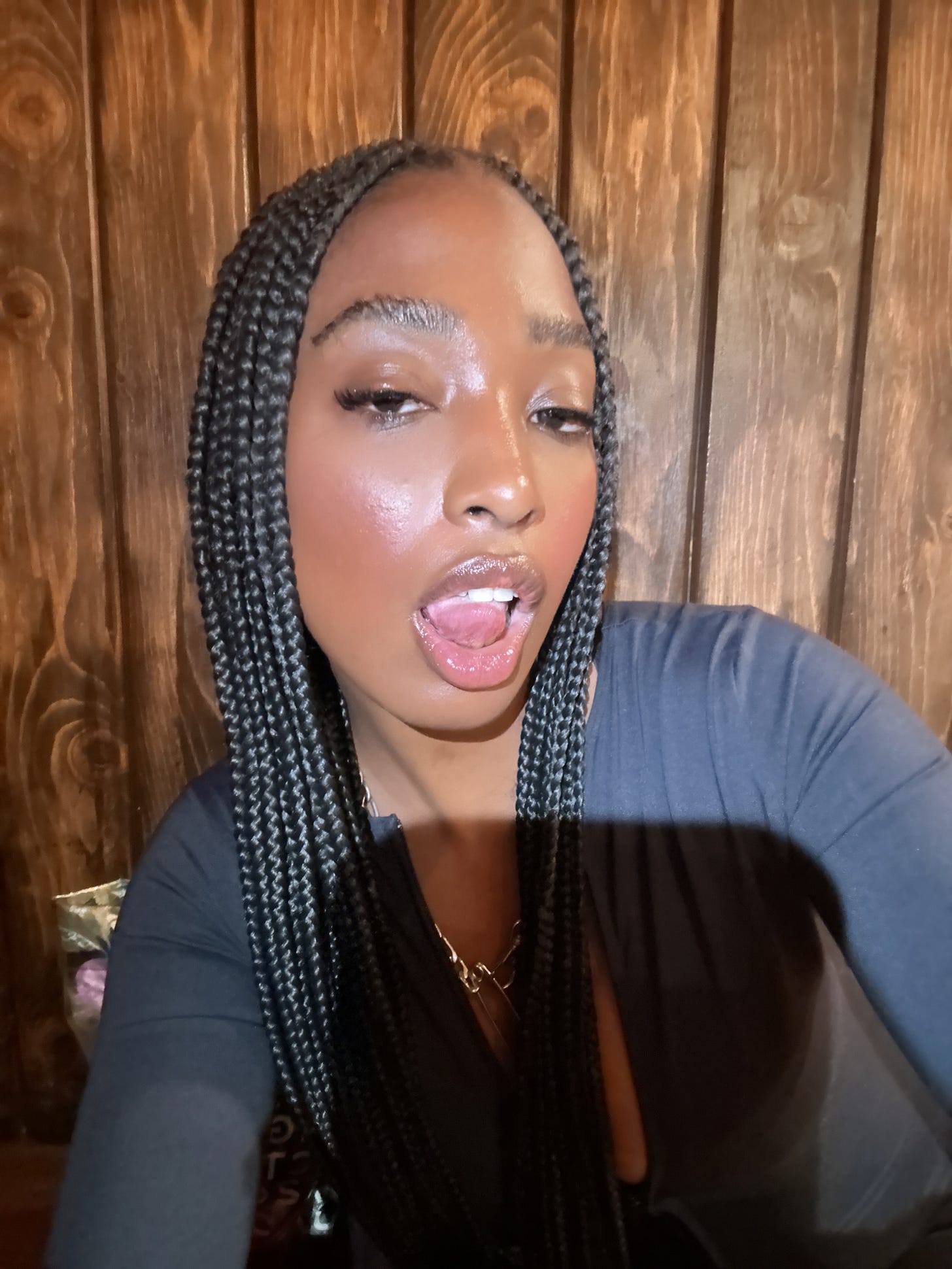
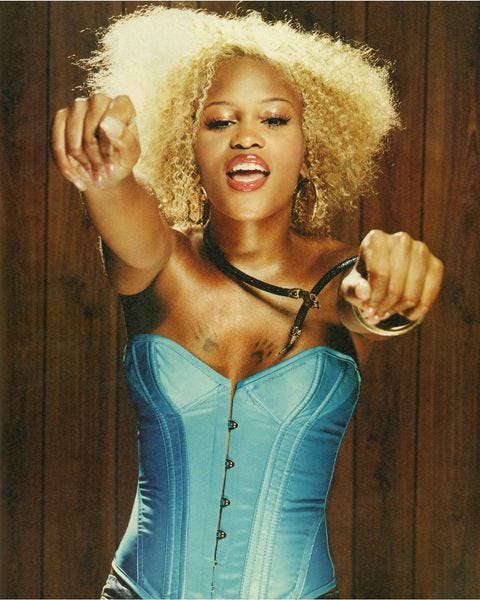
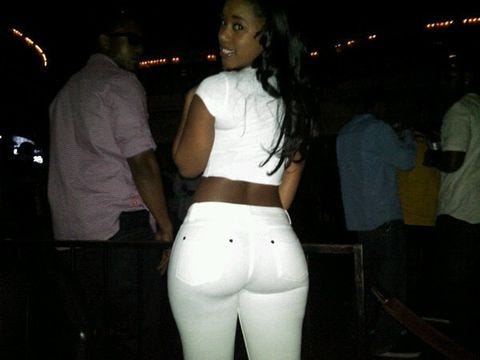
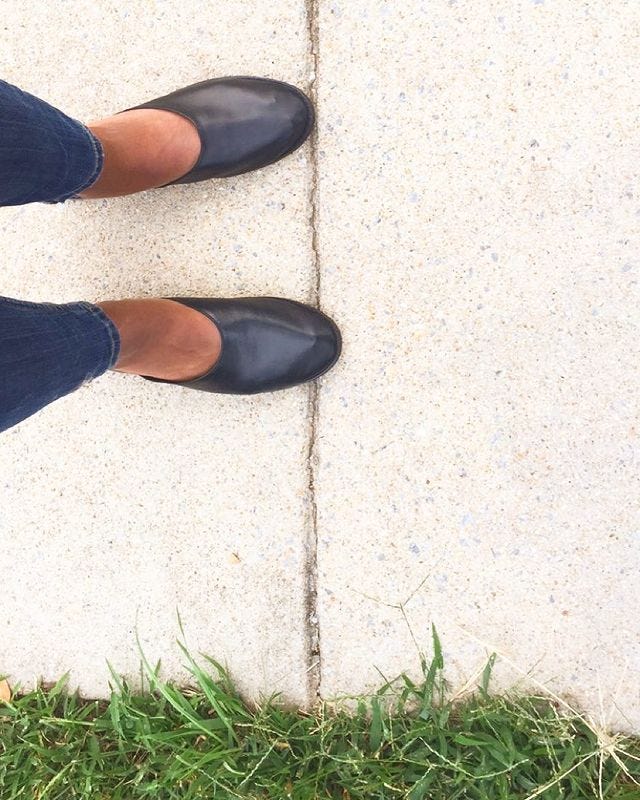


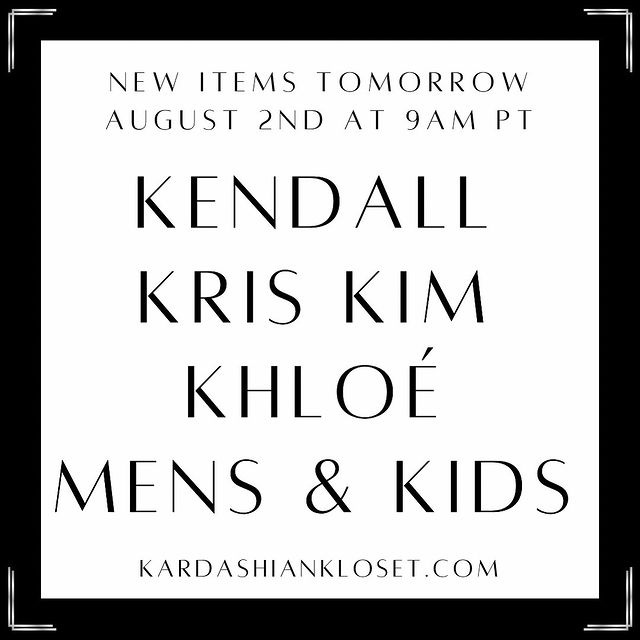
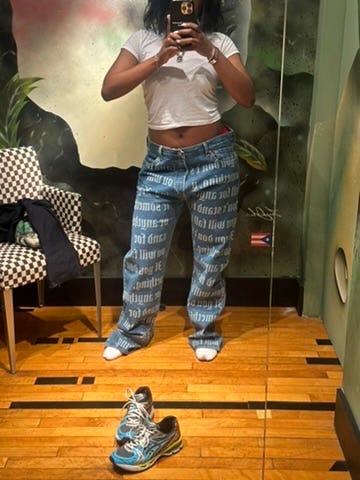
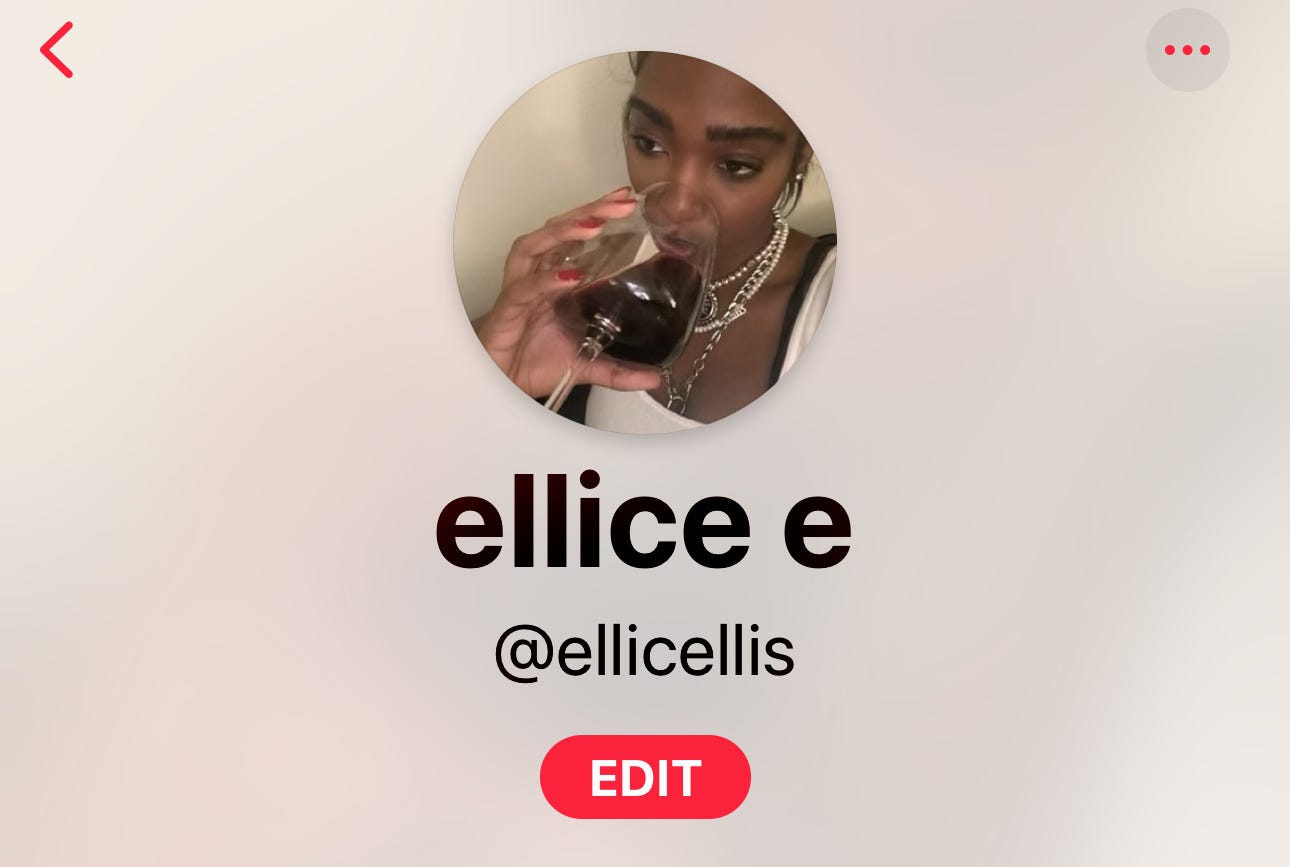
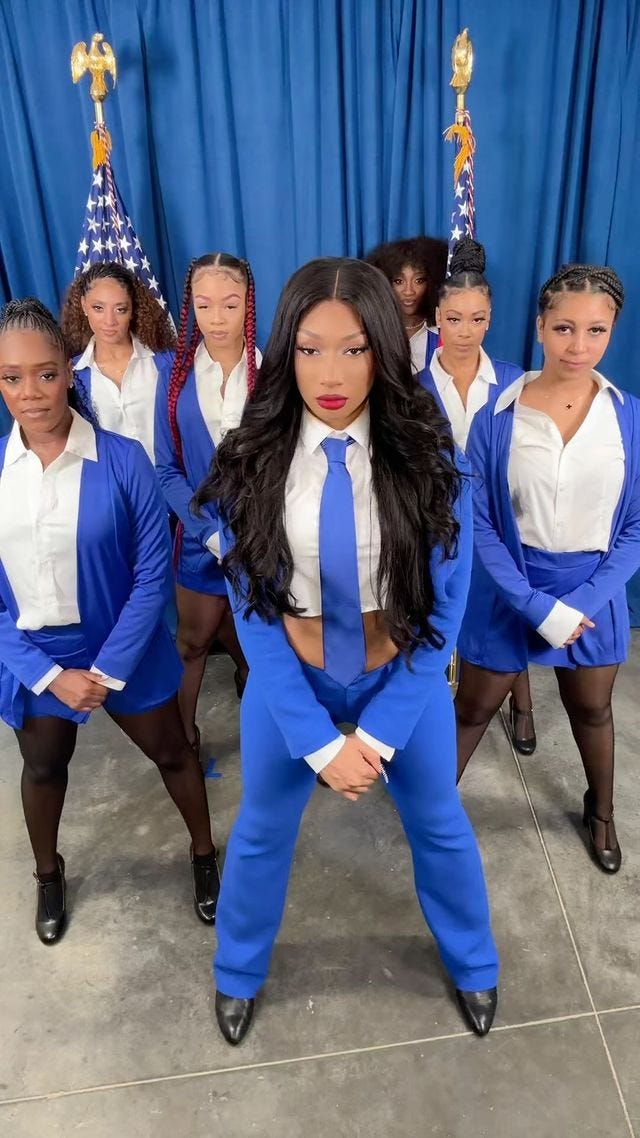
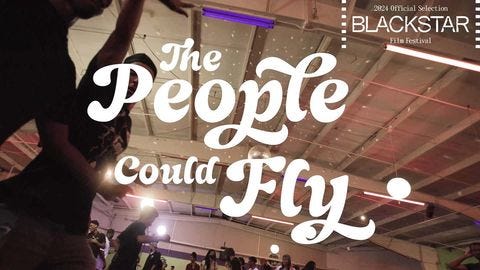


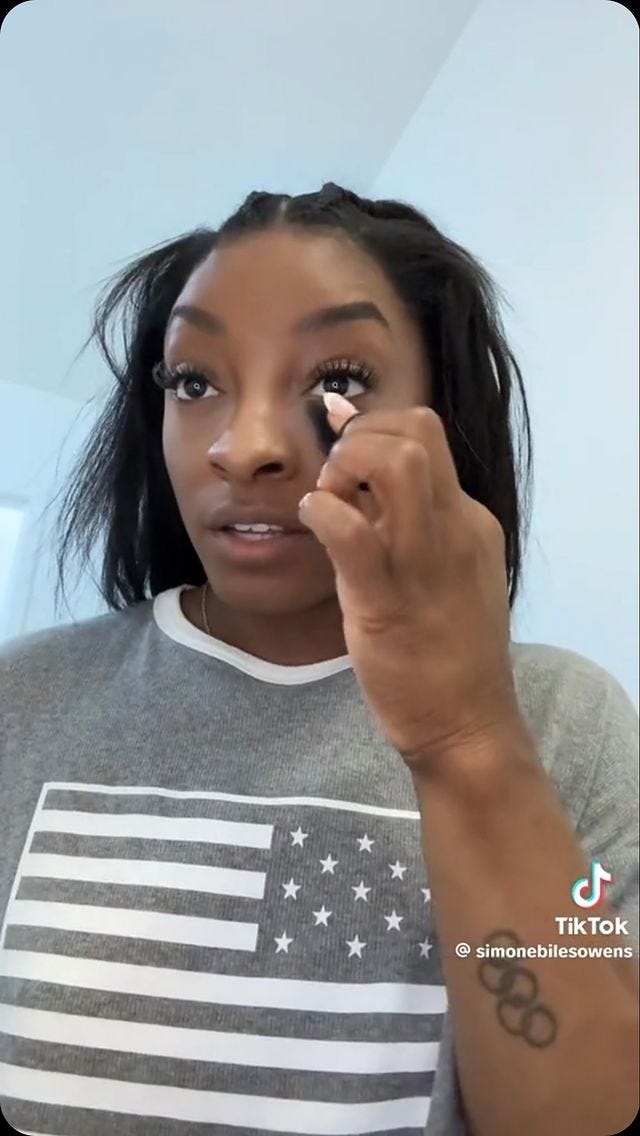
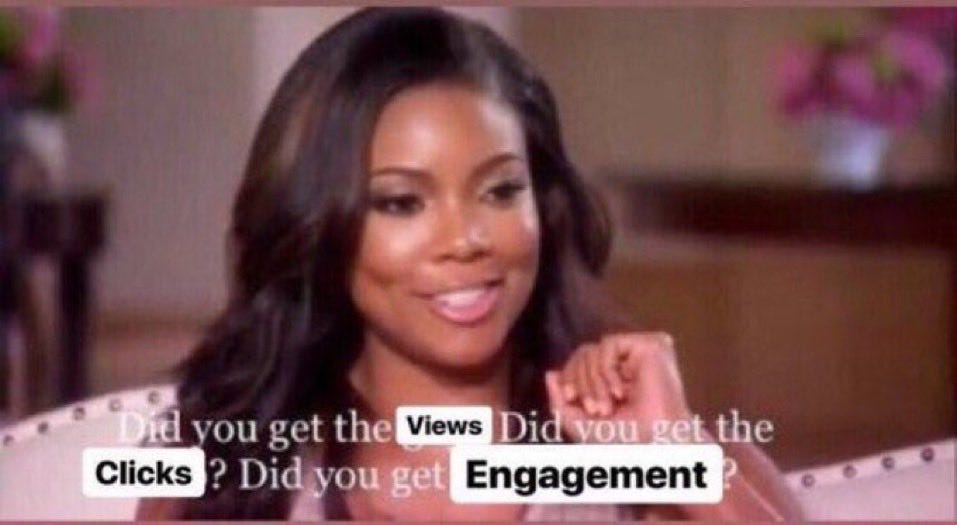
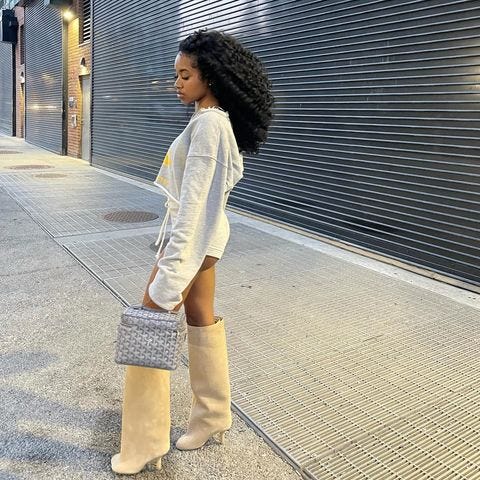
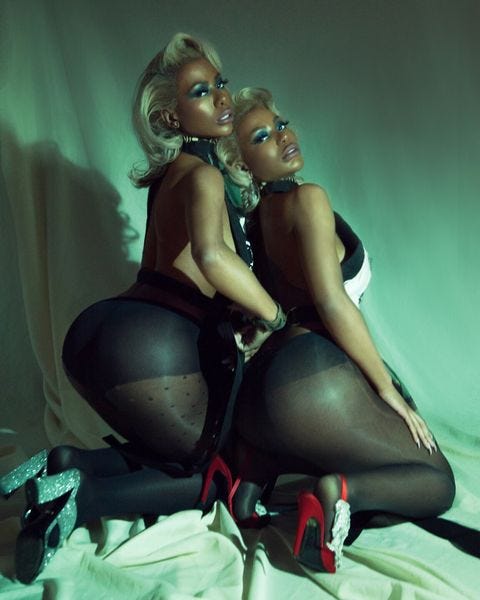

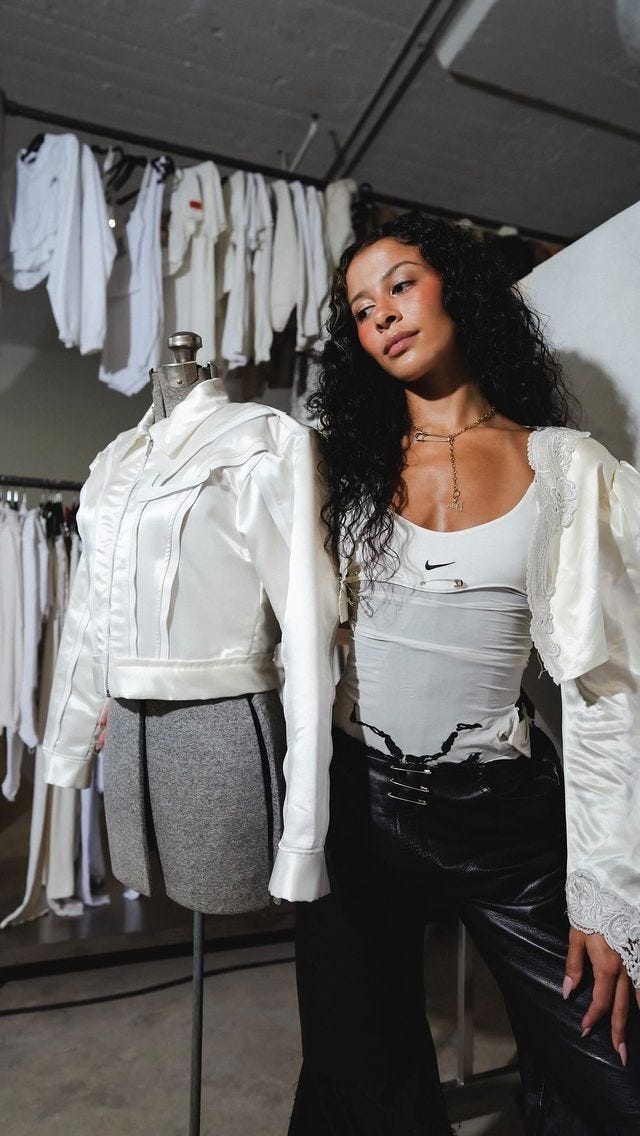
So happy you commented on the NABJ. I noticed from 2016 the dangers of over platforming Trump and noticed the news’ insatiable desire to always get a sound bite from him. Reminded me of Susan sontag’s essay on the fascination of gore/horrible acts during war and people’s difficulty to look away. Or they begin to go looking for it. Loved ur thoughts. And ur writing always makes me laugh 🤭💖
whew what a round up! thank you for sharing your perspective